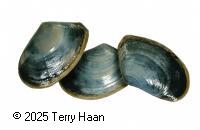Key statistics
| High |
| High |
| High |
| 56.05 |
|
|
| 1 Reported commercial catch is calculated for the 12 month period to 30/09/2026 |
|
| 2 Quota value and exports are calculated pro-rata to reported commercial catch for the 12 month period to 30/09/2026 |
Related links
Opportunities and challenges
- Localised harvest pressure
- Environmental effects from land-based activities
- Long-term management strategies
The shellfish fisheries of the North West region are influenced by its coastal environment which includes exposed beaches, rocky platforms, outcrops and harbours. Fisheries tend to be localised and of high importance to Māori and local communities. At present, commercial fisheries are limited, with potential for further development in the future.
Exposed high wave-energy beaches including Muriwai, Dargaville and Ninety Mile Beach are home to one of the most iconic species of the region, the toheroa.

Toheroa are a treasured and important species for Māori, and from about 1900 also became a delicacy for recreational fishers and the wider population. Canneries were set up in the North Kaipara and Ninety Mile Beach, with the industry, which included the infamous toheroa soup, peaking by the early 1940s. By the mid 1960s toheroa populations had declined to the point where harvesting was no longer profitable. The only permitted harvest of toheroa since 1980 has been by customary authorisation, but despite these measures the populations have failed to recover and this issue remains one of the most important in the region.
region’s harbours also hold important customary and recreational fisheries for scallop, cockle and pipi. The vulnerability of these and other shellfish to changes in the environment provide challenges for fisheries management, particularly as these harbour areas are often popular for coastal development and other land-based activities.
Another important fishery is green-lipped mussel. Green-lipped mussels are generally harvested by customary and recreational fishers by diving or hand gathering. The mussels were once gathered commercially, but now it is the mussel spat rather than the adult mussels that have become particularly valuable. Green-lipped mussel spat attach themselves to seaweed and wash up in the surf zone just off Ninety-Mile Beach. The spat and the seaweed are then harvested and provide around 80% of the mussel spat for the mussel farm industry in New Zealand. At present this is the most valuable commercial shellfish fishery in the region, but there is potential for the development of other species in the future.